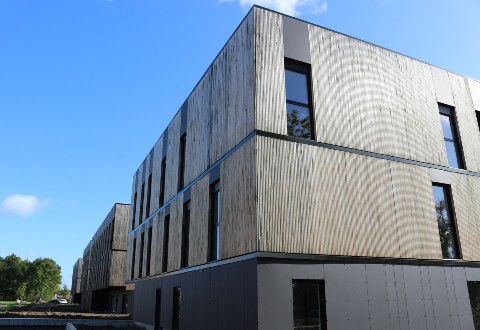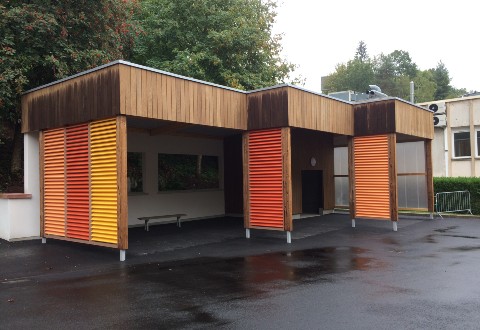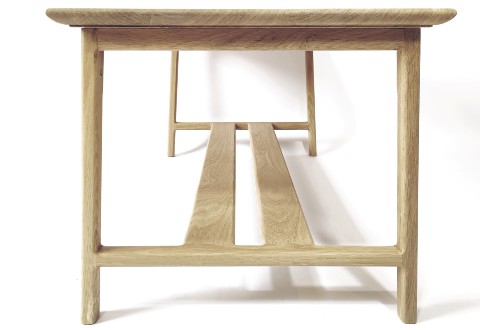
Beech wood
Beech wood
Beech is the second most widespread hardwood in France, after oak, and in great supply. The tree can reach 30 to 40 m with a maximum diameter of 1.30 m. Clear in colour, going from grey-white to clear rosé, this species provides a consistent wood. Its heart is sometimes red, the grain is straight and fine. More for interior uses, it responds well to high temperature treatment for exterior applications.
Physical and durability properties of natural wood (besides sapwood)
- Density: between 600 and 750 kg/m3 (medium-heavy wood)
- Young modulus: 14,300 MPa
- Monnin hardness: Medium-hard to hard wood (3 < d < 6 N/mm)
- Stability: Low
- Fungal durability and use class: Class 2 lifespan between 50 and 100 years/class 3a lifespan < 10 years/class 3b lifespan < 10 years/class 4 lifespan < 10 years
Physical and durability properties of THT beech wood
- Density: between 550 and 700 kg/m3 (medium-heavy wood)
- Young modulus: 15,500 MPa
- Monnin hardness: Medium-hard to hard wood (3 < d < 6 N/mm)
- Stability: Average
- Fungal durability and use class: Class 3a lifespan > 100 years/class 3b lifespan between 50 and 100 years/class 4 lifespan between 10 and 50 years
Uses of the beech species
- Carpentry
- Interior layout
- Parquets, stairs, everyday objects (toys, trays, kitchen utensils, decoration etc.)
- Curved furniture parts (seat shell, desks, night stands etc.)
- Exterior layout (decks, siding/cladding) after high temperature treatment
Beech wood properties
Dries easily with a tendency to crack
Saws without difficulty
Glues without difficulty
Its fibres favour machining with a very fine finish
Well adapted to veneer
Easy to work, beech offers a wide variety of possibilities. It stains easily with a beautiful surface quality. Bends well after steaming


